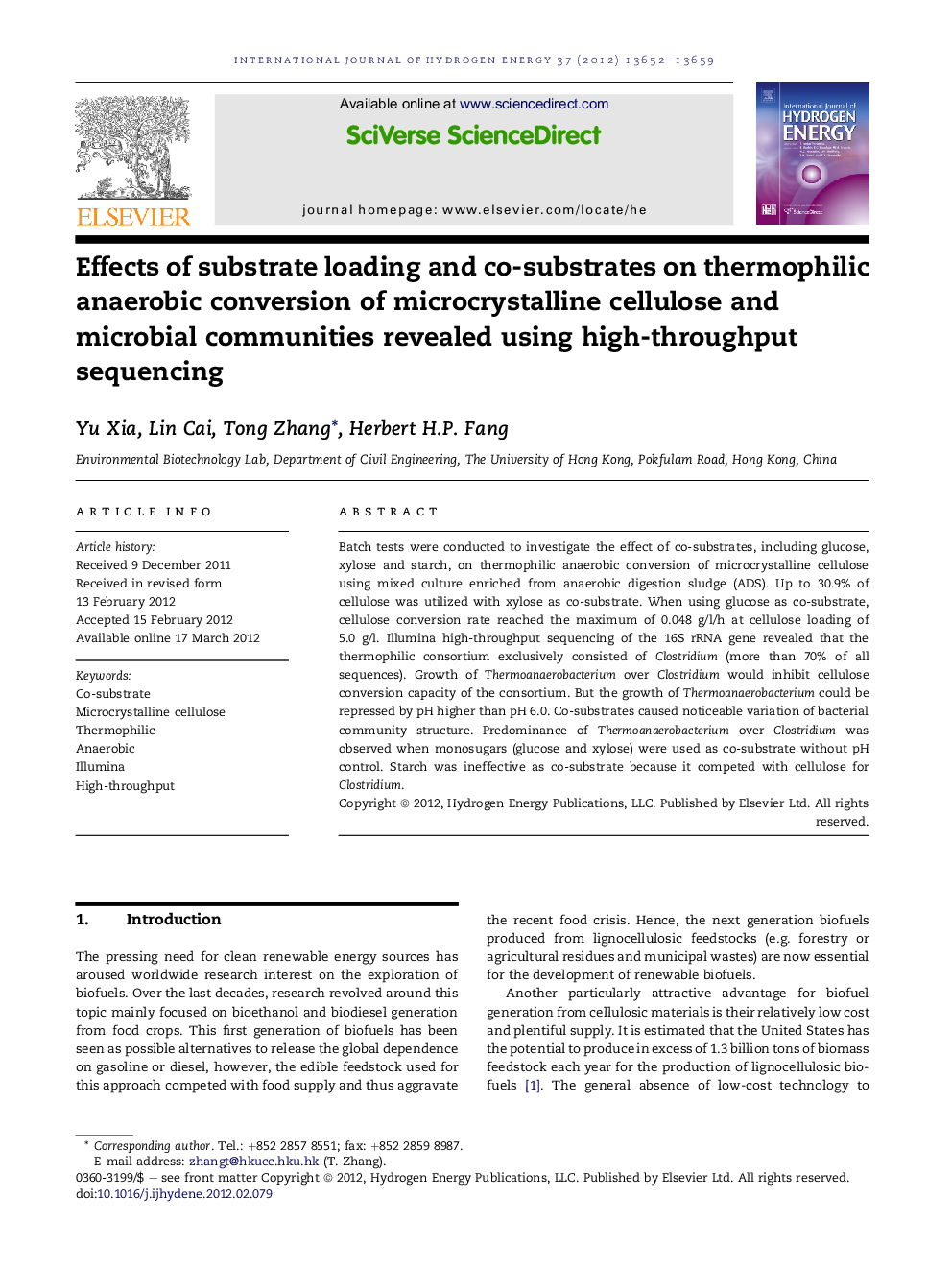| Article ID | Journal | Published Year | Pages | File Type |
|---|---|---|---|---|
| 1282266 | International Journal of Hydrogen Energy | 2012 | 8 Pages |
Batch tests were conducted to investigate the effect of co-substrates, including glucose, xylose and starch, on thermophilic anaerobic conversion of microcrystalline cellulose using mixed culture enriched from anaerobic digestion sludge (ADS). Up to 30.9% of cellulose was utilized with xylose as co-substrate. When using glucose as co-substrate, cellulose conversion rate reached the maximum of 0.048 g/l/h at cellulose loading of 5.0 g/l. Illumina high-throughput sequencing of the 16S rRNA gene revealed that the thermophilic consortium exclusively consisted of Clostridium (more than 70% of all sequences). Growth of Thermoanaerobacterium over Clostridium would inhibit cellulose conversion capacity of the consortium. But the growth of Thermoanaerobacterium could be repressed by pH higher than pH 6.0. Co-substrates caused noticeable variation of bacterial community structure. Predominance of Thermoanaerobacterium over Clostridium was observed when monosugars (glucose and xylose) were used as co-substrate without pH control. Starch was ineffective as co-substrate because it competed with cellulose for Clostridium.
► Co-substrate could affect cellulose conversion rate and community structure. ► Cellulose loading could affect cellulose conversion rate but not community structure. ► Clostridium was the cellulolytic constituent in the community. ► Thermoanaerobacterium growth over Clostridium inhibits cellulose conversion and repressed by pH > 6. ► Thermoanaerobacterium dominates when using monosugar co-substrate without pH control.
